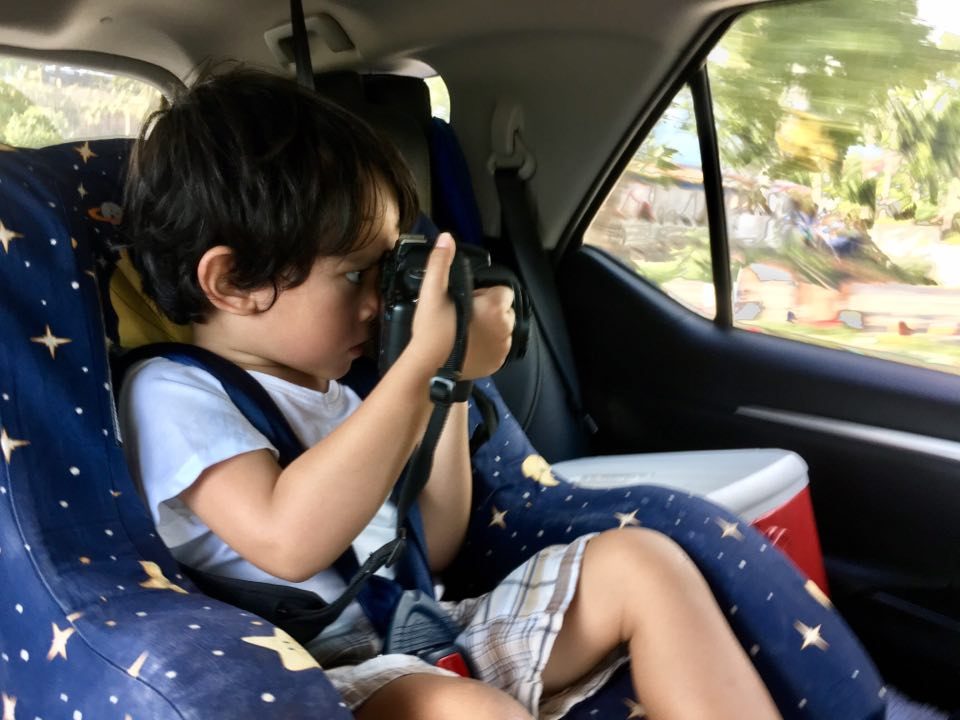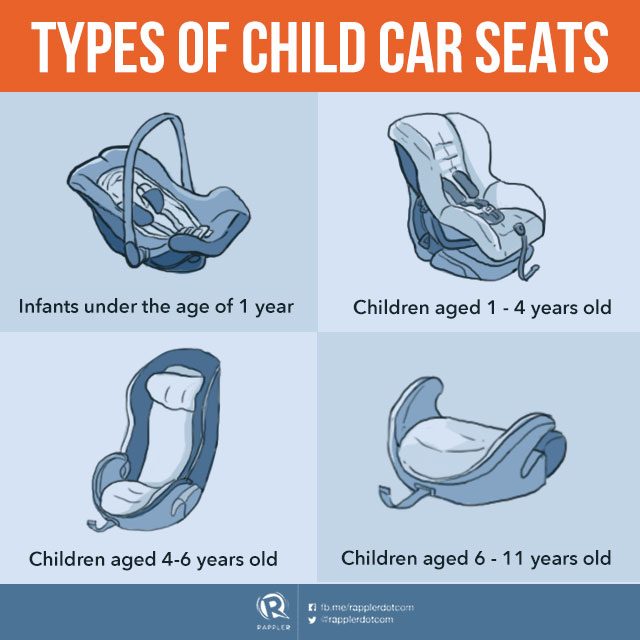SUMMARY
This is AI generated summarization, which may have errors. For context, always refer to the full article.

MANILA, Philippines – The House Committee on Transportation approved a bill requiring private vehicles to install car seats for children on Monday, September 18.
The proposed Child Safety in Motor Vehicles Act of 2017 states that it is the policy of the state to ensure the safety of children in any form of a motor vehicle while in transit.
The bill is still pending in the Senate.
While the Philippines has existing legislation mandating the use of seatbelts in cars, it does not guarantee protection for everyone who uses it, especially children and infants. (READ: Seats that save kids’ lives: Why are they rarely used in the Philippines? )
According to the World Health Organization, the child restraint system can change up to 80% on the risk of injury for children aged 0-4 in a rear-facing restraint. While children aged 0-4 with only a seat belt can change the risk of injury by only 32%.
A study funded by the World Health Organization, however, showed some concerns and questions people usually ask regarding how effective mandating a child car seat is.
Here are some of the most common issues raised and the responses of road safety advocates who support it:
Why should I get a car seat if it’s too expensive?
The study presented the different price range of child car seats in the country. The average price of a brand new child car seat in the country costs P10,040.68 while a second-hand one costs P4,250.
While this is an additional cost, road safety advocates believe that no price is too high to save a child’s life.
“I don’t think any price would equate to a person’s life. If you notice, almost everyone [in the country] owns a smartphone. It is almost the same price [with a car seat] but what is at stake here is the life of our children.” said Jason Salvador, road safety manager of the Ateneo School of Government.
Sophia San Luis, a road safety advocate from Imagine Law, said that any family who can afford to purchase a car should be able to purchase a car safety seat.
“We do not notice it, but we actually pay for safety features we enjoy in our vehicles. We pay for airbags, seatbelts, emergency braking systems or automatic braking systems. These fees are all built into the retail price which we willingly pay for when we purchase a vehicle,” she said.
San Luis added that buying one is only roughly equivalent to a low-end smartphone. This is nothing compared to the child’s safety that is at stake.
Will it be effective? It’s traffic anyway
“This is only true for metro manila during the day and rush hour, and not even or all its roads. From 12 mn to 4 am when the majority of fatalities happen in Metro Manila, and other metro manila roads that are not congested, fatal road crashes still occur,” San Luis said.
Salvador added, “Admittedly, traffic in our country is something we all have to deal with but we have to remember that the danger can happen even in minimum speed. Sudden or abrupt stoppage of a vehicle even caused by different factors can likewise endanger the child, maybe not fatally but it can surely cause serious injury,”
Won’t it be effective only during long rides?
Parents who travel in short distances might not recognize the need to purchase a child car seat. However, Salvador reiterates the unpredictability of a road traffic crash.
“Road mishaps may happen anytime – be it on a long ride or a short trip. Child Seats are effective in both since there is no way of telling when a collision or a sudden stoppage of a vehicle might occur. As they say, it is better to be safe than sorry,” he said.
Is it worth it if it’s only for temporary use?
If this requirement passes into a law, a parent will have to buy at least 4 child car seats to match the age categories of their child until they turn 14.

San Luis cites data from the Philippine Statistics Authority on the number of children who died from road traffic crashes and reminded the responsibility of the parents to give the children the safety measures that they need. (READ: IN NUMBERS: Road crash incidents in the Philippines )
“If I were a parent, I wouldn’t take my chances… The odds are stacked against us when we are on the road and if you wear a seatbelt to protect yourself, I don’t think it’s fair that you’re not giving your child the same protection,” said San Luis.
In arguing for the temporary use of the child car seats, Salvador pointed out how parents buy things that their children use only for short time.
“Take the case of cribs, playpens, and strollers, these are almost, if not, more-costly than child seats but are being purchased. If we can afford to buy our children these devices for their and our comfort and convenience, surely we can and will buy a device that will not only ensure their comfort and convenience but more importantly their safety,” he said.
It’s not a part of our culture. Is it really needed?
Culturally, most people would prefer to carry their child on their laps since it gives a feeling of security. However, this is not a safe practice.
“Scientific studies have shown that carrying children while on the road is more dangerous since a sudden stoppage or road crash would result in more injuries to both since the weight of the adult carrying the child when they are thrown inside the vehicle, will likely contribute to the impact,” said Salvador.
He added, “we often think we do not need certain things until we are placed in a situation wherein we actually need it and we eventually regret not having it,”
In the Philippines, 636 children died in 2015 due to a road traffic crash. – Rappler.com
Add a comment
How does this make you feel?
There are no comments yet. Add your comment to start the conversation.